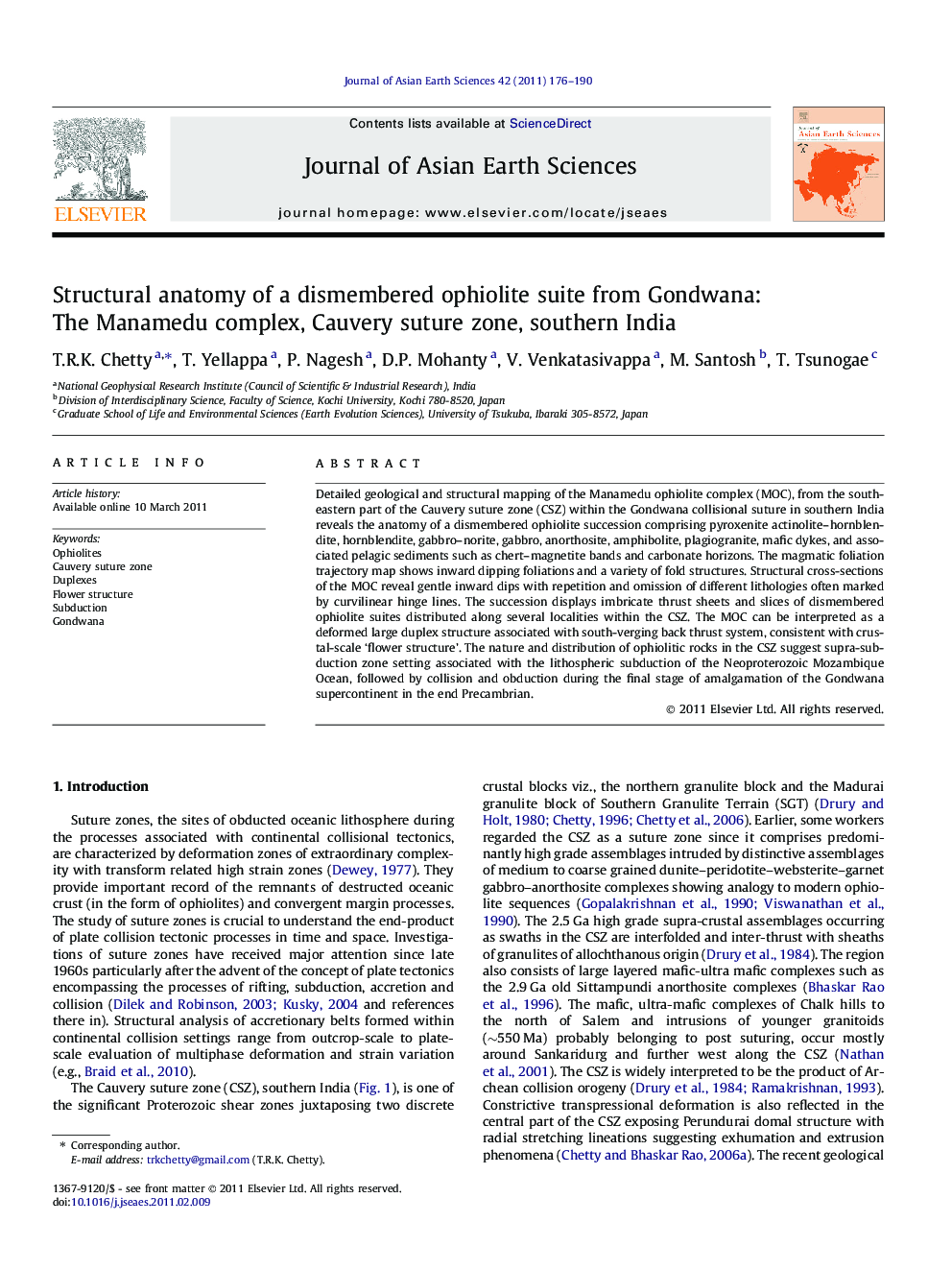| Article ID | Journal | Published Year | Pages | File Type |
|---|---|---|---|---|
| 4731848 | Journal of Asian Earth Sciences | 2011 | 15 Pages |
Detailed geological and structural mapping of the Manamedu ophiolite complex (MOC), from the south-eastern part of the Cauvery suture zone (CSZ) within the Gondwana collisional suture in southern India reveals the anatomy of a dismembered ophiolite succession comprising pyroxenite actinolite–hornblendite, hornblendite, gabbro–norite, gabbro, anorthosite, amphibolite, plagiogranite, mafic dykes, and associated pelagic sediments such as chert–magnetite bands and carbonate horizons. The magmatic foliation trajectory map shows inward dipping foliations and a variety of fold structures. Structural cross-sections of the MOC reveal gentle inward dips with repetition and omission of different lithologies often marked by curvilinear hinge lines. The succession displays imbricate thrust sheets and slices of dismembered ophiolite suites distributed along several localities within the CSZ. The MOC can be interpreted as a deformed large duplex structure associated with south-verging back thrust system, consistent with crustal-scale ‘flower structure’. The nature and distribution of ophiolitic rocks in the CSZ suggest supra-subduction zone setting associated with the lithospheric subduction of the Neoproterozoic Mozambique Ocean, followed by collision and obduction during the final stage of amalgamation of the Gondwana supercontinent in the end Precambrian.
► Structural studies of Manamedu ophiolite complex reveal a semicircular shaped duplex structure. ► The MOC interpreted to have traveled over a roof thrust during transpressional tectonic regime. ► The geometry of fold styles and foliation trajectories in MOC suggest possible sheath fold geometry.
